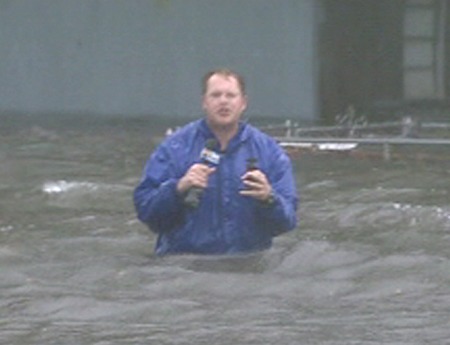Editorial: A Checkered Milestone

Ten years on, Hurricane Katrina casts an outsized shadow on media and communications, on top of the many tragic failings in government and civil engineering. There’s the notion of race, so inextricably a part of the events on the ground but yet so often handled clumsily, if at all, by those capturing the scope of the slow-motion tragedy to TV viewers. There are emergency communications, which in 2005 had not advanced much beyond the crisis point of 9/11 just four years earlier but got an FCC revamp after floodwaters receded.
More than anything, though, Katrina’s legacy for our current media era, which pushes out content across linear TV and social platforms, is the haste and imprecision that marked too much coverage. Brian Williams’ exaggerated accounts rank as mere misdemeanors here. The real malfeasance was pack journalism exaggerated by the staggering amount of live airtime to fi ll. Events like looting, less widespread than it was made out to be, crowded out analysis of flood planning and response. Admittedly, the latter is a wonky subject usually more fi t for a David Simon HBO series than a live newscast. But consider Mable and Sal Mangano, the only individuals criminally prosecuted in connection with any of the 1,833 lives lost or billions of dollars of damage. They were eventually acquitted of manslaughter, but most viewers might not recall that detail. What they do assume was that the couple’s actions caused the deaths of 35 seniors. There were even unfounded and unsourced reports the couple had gone shopping and gambling after the tragedy. And so an even more lurid version of Richard Jewell’s Atlanta Olympics railroading was folded into an already Bosch-like scene of devastation.
To be fair, there was a lot of intrepid, valorous work by the media during those initial days and the anguished years of the ongoing recovery effort. The New Orleans Times Picayune heroically managed to publish daily editions. Local affiliates surrounded the events and surfaced critical images and angles. Louisiana Public Broadcasting powered global coverage, never signing off. Plus, talent and crews from national networks sometimes abandoned newsgathering efforts altogether to help residents in need.
Even so, the disconcerting takeaway in TV terms is that the storm too often reinforced the medium’s basest impulses: to gawk, to speculate, to put the most shocking images on a repeating loop. Next time—let’s hope it’s not anytime soon—the public will need coverage that probes for answers as much as it provokes with images and suppositions.
Broadcasting & Cable Newsletter
The smarter way to stay on top of broadcasting and cable industry. Sign up below










